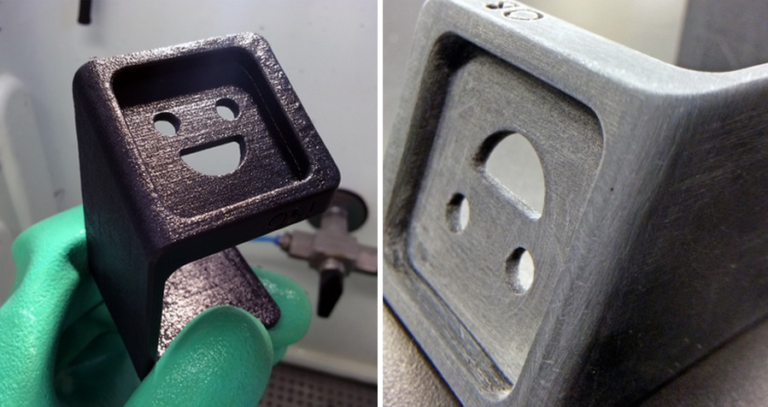YOU MIGHT ALSO BE INTERESTED IN

Recommended Wall Thickness for 3D Printing
Learn More

Methods for Cleaning 3D Printed Parts
Learn More
3D Printing Materials
Process
Lead Time
Colors
Resolution
Price
Applications
Rubber-Like is one of the unique printing capabilities of PolyJet machines because of the PhotoPolymer resin used in this style of printing. The prints will give you full flexibility of parts and allow you to simulate rubbers between Shore 27A and Shore 95A. This material, however, will not give you the same elastomeric properties you are used to in rubbers.
Rubber-Like is also great for testing overmolds, as the PolyJet machines can easily print one body in rubber and another in rubber without any seams.
Tensile Strength
Elongation at Break
The hardness of our rubber material can be easily configured to print in anything between Shore 27A and Shore 95A. The finish is smooth with a slight glossy surface. While the print is high resolution, the rubber material does tend to show off defects much easier, so expect some visible build lines.
Min Wall Thickness
Min Clearance + Gaps for Fit
Max Part Size (xyz)
Tolerance
Internal Cavities
Internal cavities are highly discouraged with RubberLike due to the water-based support material that will swell and change the geometry overtime if left inside. Note that support material that has no direct line of sight inside a cavity cannot be cleaned out.
Text Guidelines
Text should be embossed by at least 1.0 mm to stay visible after printing. Text should also be at least 1.5 mm thick in all areas.
Learn More
Learn More